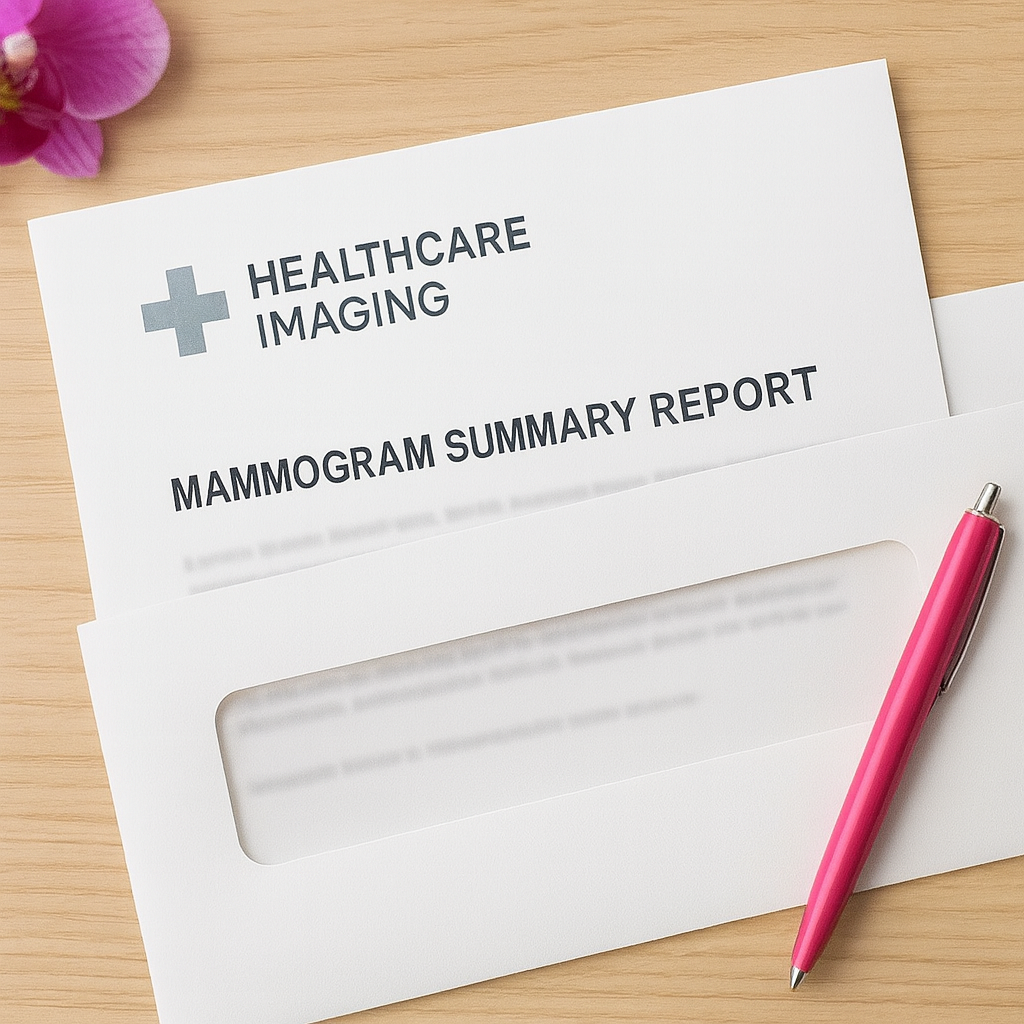
Fight With Knowledge Not Fear
Imaging Clinics Owe You
 You should receive a written summary letter from the imaging clinic within 30 days of your mammogram, as required by federal law. While some clinics may offer same-day results, most require time for a radiologist to review the images and finalize the report before sending it to you. Use the following list to understand exactly what that letter—and their process—should provide under federal law:
You should receive a written summary letter from the imaging clinic within 30 days of your mammogram, as required by federal law. While some clinics may offer same-day results, most require time for a radiologist to review the images and finalize the report before sending it to you. Use the following list to understand exactly what that letter—and their process—should provide under federal law:
Important: You are not responsible for tracking this report down — the law places the burden on the imaging clinic, not on you. If your doctor is the only one who notifies you of your results, and you never receive a direct letter or summary from the imaging clinic, that clinic is not compliant with federal law under the Mammography Quality Standards Act (MQSA).

Reminder (Full Diagnostic Report)
Your referring doctor should receive your full diagnostic report directly from the imaging clinic — this is a legal requirement under federal law. The report must include your BI-RADS density category (A–D), your BI-RADS numerical score (0–6), and any technical findings used to determine next steps.
Your Doctor Owes You Answers
What is my BI-RADS density category (A–D), and what does that mean for me?
Mammograms are significantly less accurate in women with dense breasts (especially Categories C and D).
NCCN (National Cancer Center Network) screening suggestions based on your density: For Category C (heterogeneously dense): Consider ultrasound if additional risk factors are present. For Category D (extremely dense): Add either breast MRI or ultrasound depending on personal risk profile. Ask your doctor or imaging provider if your screening plan follows these guidelines.
The following chart summarizes the BI-RADS density categories and associated cancer risk:
BI-RADS Breast Density Categories and Associated Cancer Risk
| Category | Description | Relative Risk vs. A | % of Women | Key Notes |
|---|---|---|---|---|
| A | Almost entirely fatty | Baseline | ~10% | Least dense, easiest to detect cancer on mammograms. |
| B | Scattered areas of fibroglandular tissue | ~1.2x | ~40% | Slightly higher risk than A. Cancer may be mildly masked. |
| C | Heterogeneously dense | ~1.8–2.5x | ~40% | Tumors are harder to detect; risk is notably higher. |
| D | Extremely dense | ~4–6x | ~10% | Highest risk category. Cancer may be missed on mammogram. |
Risk Comparison Example:
A woman with Category D (extremely dense breasts) is 4 to 6 times more likely to develop breast cancer compared to someone with Category A. Also, her mammogram is more likely to miss a tumor, making supplemental screening like MRI or ultrasound more critical.
What is my BI-RADS numerical score (0–6)?

Understanding your BI-RADS numerical score is critical. This number helps identify whether your imaging results were routine, uncertain, or potentially serious. A score of 0 means your mammogram was inconclusive or incomplete — often due to asymmetry, overlapping tissue, or other factors that obscure a clear result. This also requires immediate follow-up imaging. Any score of 3 or higher should be taken seriously and typically warrants additional imaging or follow-up care. Don’t wait for someone to flag it for you — ask and act.
The summary you receive from the imaging clinic will not include your BI-RADS density category or numerical score. That information is only included in the full diagnostic report sent to your doctor. It’s critical that you ask your doctor to go over these details with you — they are key to understanding your risk and deciding whether further screening is needed.

Fiduciary and Ethical Duty
Important Reminder: While federal law doesn’t require your doctor to review your breast density results with you, they have a fiduciary and ethical duty to help you understand your risks and ensure appropriate follow-up care. Failure to do so — especially when supplemental screening is clearly indicated — may constitute a serious lapse in care and fall below accepted medical standards.
A Personal Message from Kevin Lawrence, Founder of Carrie Lyn Cares
As the founder of Carrie Lyn Cares, I want to speak directly to you. Regardless of what the law claims to offer or how thorough the federal guidelines may seem, the reality is that many women are still not receiving the clear, actionable information they need to take control of their health. Too often, patients are given vague language, incomplete results, or no follow-up at all — leaving them unaware of their breast density, cancer risk, or what questions to even ask next.
This isn’t hypothetical for me. Carrie didn’t receive the professional care and guidance she should have — not from the imaging clinics and not from her primary care team. Although they knew she had Category C (heterogeneously dense) breast tissue, only routine mammograms were performed — while a tumor was silently growing behind the dense tissue, obscured from view.
No supplemental screening was ever recommended, such as ultrasound or MRI, despite what were clear clinical indications. That lack of information, transparency, and urgency most likely cost Carrie her life.
Early-stage breast cancer is treatable — more than 98% of women survive when it’s caught early. But dense breast tissue makes detection harder, and without proper communication, many women never get that early chance.
This guide was created because I believe women deserve better. You deserve to understand your results, your risks, and your rights. I hope this empowers you to push for full transparency and proper care. Don’t wait to be told — take control of the conversation.
Kevin Lawrence
In loving memory of my wife, Carrie Lyn